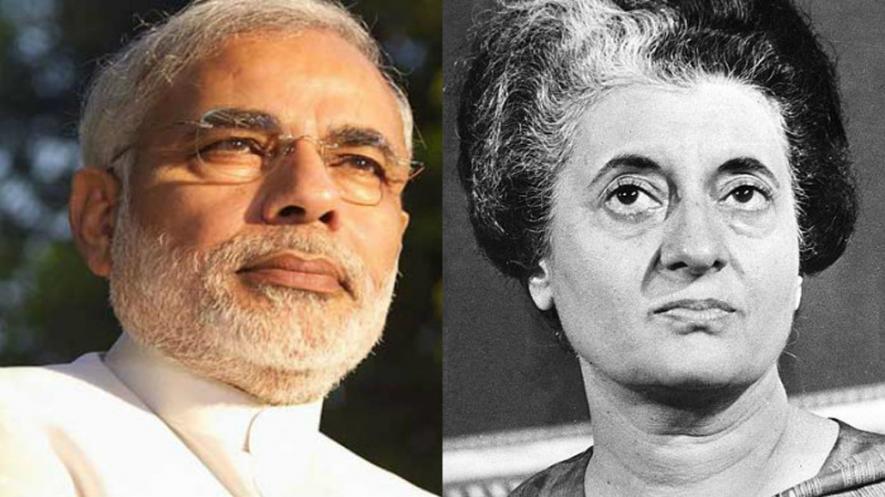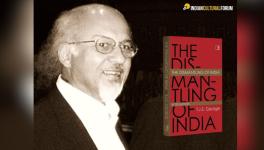Introspect, We Must

Image Courtesy: Zee News
Let us assume electronic voting machines (EVMs) cannot be manipulated. Let us assume the number in each and every EVM perfectly matches the number in the corresponding VVPAT (voter verified paper audit trail) machine. Let us assume the election administration in the soon-to-become most-populous country on the planet is impartial and transparent, that all personnel involved in the biggest exercise of its kind in the world’s largest democracy do not influence voters to exercise their franchise in favour of the ruling regime.
If, hypothetically, all these assumptions are correct (even if they actually aren’t), does that mean Narendra Modi would not have returned as Prime Minister of India? Not at all. He would have become the first leader of the Bharatiya Janata Party (BJP) to be elected for a second consecutive five-year term even if the system was “gamed” and the poll machinery rigged to a significant extent.
Does this mean that we pull our punches on the Election Commission of India and not urge it to become more accountable to the electorate, especially in the manner in which EVMs and VVPATs have been deployed? Should we not continue to put a lot of pressure on the Commission so that the body is less tardy, less discretionary and less biased when it comes to dealing with complaints against those aligned to the incumbent government (including Prime Minister Modi and BJP President Amit Shah) in comparison to the way complaints against those on the other side of the political divide (however weak they may be) are dealt with? Far from it.
Let us make another assumption, one that is clearly unrealistic. For a moment, presume that all voters who were opposed to Modi had come together under one banner. The contest in each of the 543 Lok Sabha constituencies in the country would then have been largely between the “other” and the candidate belonging to the BJP or one of its coalition partners in the National Democratic Alliance. What would this mean? Since the NDA got roughly 44% of the total vote, in the improbable situation that all the remaining votes were cast against the ruling coalition, the outcome would be obvious. Let us ignore such a possibility since it is unlikely to ever materialise.
There are important questions that must be asked. Should one urge the Indian National Congress, once the country’s “grand old party” that led the freedom movement against our erstwhile British colonial masters, to become less arrogant and elitist, more adjusting to potential coalition partners and discard much of the existing leadership? Of course, we must.
Should we not continue to impress on the Congress, the communists, the socialists, the regional parties and all others opposed to the BJP and its ideological parent, the Rashtriya Swayamsevak Sangh, that having already sunk to their lowest depths, the more they remain disunited the more irrelevant they become? Should the Opposition not start getting its act together now and not wait till the shadow of the 2024 elections looms on the horizon?
The answers to these rhetorical questions are obvious. The British well understood the old adage – united we stand, divided we fall. So does Modi. For those opposed to the Supreme Leader of the Second Republic of India, the strongest-ever Prime Minister the country has seen after Indira Gandhi, unity is the only way forward. Today’s rulers believe in the brute force of the majority. This is majoritarianism in practice. To those belonging to the minority communities (particularly Muslims), it has become amply clear that they can live in India only as second-class citizens.
The 2019 elections have clearly demonstrated how demagoguery works. In the post-truth world of the social media that we are living in, Modi, like Donald Trump, has shown utter disregard for facts and factual analysis. For these leaders, emotional appeals to voters – based on stoking hyper-nationalist sentiments and dividing people on religious and communal lines – help divert attention from economic issues. And they have succeeded, at least for the time being. But, for how long, we don’t know.
Still, we cannot stop going aggressively after the government for its failure to create jobs for the youth and for not being able to alleviate the lot of farmers who are struggling for their livelihoods. We must continue to question the Prime Minister’s claims that he believes in “inclusive” development.
There are two noteworthy aspects of the outcome of the 17th general elections. First, the denouement in Uttar Pradesh highlights the limitations of a largely caste-oriented alliance (between the Bahujan Samaj Party and the Samajwadi Party) when confronted by a more dominant political narrative. Under such circumstances, the old paradigms of “identity politics” fail to hold. Modi and Shah have sub-divided Other Backward Classes (OBCs) and dalits in India’s most-populous province.
Second, the electorate has become much more discerning in distinguishing between regional and national considerations while voting. Witness what has happened in Madhya Pradesh, Rajasthan, Chhattisgarh, Telangana, West Bengal and, most importantly, in Odisha. In the last-named state, many voters evidently voted differently in the Lok Sabha and the Vidhan Sabha elections that took place simultaneously.
Today, Modi and Shah are bigger than the government and the political party they lead – though, of course, they would be the first to deny this. They will continue to trash the country’s first Prime Minister Jawaharlal Nehru while remaining somewhat soft in criticising his daughter Indira Gandhi. Never since the early-1970s when she was at the peak of her popularity has so much power been concentrated in the hands of so few – Indira Gandhi and her younger son, Sanjay then, vis-à-vis Modi and Shah now.
In 1971, after (a) splitting her party and isolating the conservatives in the Congress; (b) abolishing privy purses given to feudal lords; and (c) embarking on nationalisation of banking services, coal mining and steel production, Indira Gandhi saw the entire Opposition ganging up against her. This was before the nuclear “implosions” at Pokhran had taken place and Bangladesh was born.
She disproved that she was Nehru’s goongi gudia (dumb doll), a phrase with which she was taunted. She said her rivals had only one aim, Indira hatao (remove Indira) whereas she too had one goal, garibi hatao (remove poverty). Modi has already appropriated her famous slogan. But is this where the similarities stop?
Indira Gandhi imposed the Emergency in June 1975 that lasted 19 months. She stifled dissent and undermined institutions like the judiciary like never before (and Modi has followed in her footsteps). Congress president Rahul Gandhi’s grandmother lost power in March 1977, then apologised profusely for the “excesses” that had been committed. She bounced back in January 1980.
During the Emergency, the words “socialism” and “secularism” were included in the preamble to the Constitution of India. In implementing Project Hindu Rashtra (nation) over the coming years, will the Modi regime excise these words, if not in letter but in spirit?
Yes, it is a cliché to say that the next five years will determine the future of the “idea of India” as a heterogeneous, plural and diverse nation-state. A cliché is an overused but self-evident truth even if it lacks in originality. But nevertheless, it is often true.
As the reality of the electoral verdict of 2019 sinks in on those who proudly describe themselves as “Left” and “liberal” (this writer included), we have to get out of the comfort of our echo chambers. We must introspect first before asking others to do so.
Get the latest reports & analysis with people's perspective on Protests, movements & deep analytical videos, discussions of the current affairs in your Telegram app. Subscribe to NewsClick's Telegram channel & get Real-Time updates on stories, as they get published on our website.
























